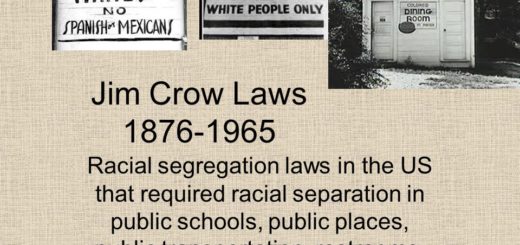Will UK’s Channel 4 do documentaries on Colonial British crimes in Ceylon (Sri Lanka)?

Colonial Britain ruled present Sri Lanka since signing of the Kandyan Convention in 1815 to 1972 when Sri Lanka became a Republic though nominal independence was given in February 1948. Britain’s 127 years rule has been filled with all types of crimes yet very little apology or accountability.
The killings by Britain during its rule in Sri Lanka exceeds the terror killings of the LTTE or the Islamic suicide killings on Easter Sunday.
Will Channel 4, Ben de Pear or any other producers put the following crimes into a documentary?
9 Dec 1817 – Madugalle Massacre
Maj. MacDonald burnt down an entire village approved by the British Governor
Lt. J. Maclaine of 73 regiment hung Kandyan prisoners without trial & relished watching them hung while having his breakfast
1817-1818 Uva Wellassa Massacre
British soldiers were ordered to massacre the entire male population in Uva Province as part of British Scorched Earth Policy – killing cattle, burning homes, property, destroying irrigation systems, paddy fields and anything moving (human/animal)
1818 – British lynching tree near Paranagama on the Kandy-Badulla pathway.
1848 – Matale rebellion
As a result of British plundering lands using Crown Lands Ordinance & 1840 Wastelands Ordinance. This resulted in a wave of Tamils from Tamil Nadu being brought down to work on their estates.
The British issued a proclamation confiscating property. Purang Appu and Gongallagoda Banda were shot and a monk Kudapoilla Unnanse was shot under orders of Torrington despite appeals by queens advocate H C Selby. Governor Torrington was the cousin of the UK Prime Minister.
29 July 1848 – Martial Law declared by Governor Torrington when natives opposed severe taxes. Sinhalese were rounded up & executed without trial.
Indian slaves brought to Ceylon
Many died under severe conditions en route from Tamil Nadu to Sri Lanka.
Since C4 wishes to tarnish the reputation of a decorated officer holding rank of Maj. Gen. and presently heading the State intelligence services without any evidence and only by featuring a bogus economic refugee as entertainment, the British may like to have some real evidence of crimes committed by British generals in then Ceylon from their own diary entries.
Campbells’ memo
“Soldiers wonder about the value of what they destroyed……..! We were under orders to destroy all coconut trees, all fruit trees and paddy fields. We were also ordered to destroy the bunds of the water reservoirs. This water was essential to them for cultivation. We wondered how long it must have taken for them to build these giant reservoirs and how long it would take them now, without having any engineers or the equipment, to rebuild or repair them.”
1818 Major Forbes memo
“We met so many military patrols who had been dispatched for burning the villages and their property. They were not looking for the enemy. The natives who survived our fire would definitely get perished in sickness and in famine as we had destroyed all their cultivation, lakes and villages.”
1818 diary of Sergeant Calladine
“Not a single day passed without burning a village and killing the Chingalese men. We didn’t take prisoners.”
British captured wives and children of patriots and held them as ransom until patriots surrendered.
Kill anyone without trial (1817)
Col. Hook orders Sinhalese to be hung without trial
(Mawatagama Nilame a close relation of the Mahanayake of Asgiriya was hung without trial)
Capt. Fraser, Brownrigg’s personal assistant killed 19 Sinhalese & too 10 prisoners. 7 of them were executed without trial, other 3 forced to work as his guides. The 7 executed Sinhalese were hung on the roadside in Godamunne and the blood of their corpses polluted the nearby river making it unusable to the natives the next morning.
Even London Times on the 7 of Oct. 1818 declared Brownrigg’s brutal “method of conflagration” (a term used by his Gazette) as “dreadful measures”.
Diary of Dr. John Davy (British Army Surgeon) Indiscriminate killing of civilians
“We didn’t manage to kill the enemy. But we killed a lot of villagers. We must have killed at least 10,000 men in the villages”
“When a district rose in rebellion, one or more military posts were established in it; martial law was proclaimed; the dwellings of the resisting inhabitants were burnt; their fruit-trees were often cut down and the country was scored in every direction by small detachments, who were authorized to put to death all who made opposition, or were found with arms in their hands… In candour… it must be remarked that our government was hardly answerable for the irregularities committed on our side…….”
On 9th December 1817 a few Kandyans waylaid a convoy of provisions escorted by Malay soldiers near Tibbottugoda resulting in the British losing both provisions & soldiers. The British suspected Andavala Mohotalla who lived nearby & his property and neighborhood was destroyed, fruit trees were cut down as revenge by the British.
In Madulla the next village, following 5 men being executed and houses of 6 headmen burnt down, the villagers went to hide in the caves.
Brownrigg’s General Report on 6th January 1818 describes what happened “having got information of the hiding place of the villagers, it was decided to surprise and seize them the same night. The rebels, as is supposed, to the number of fifty men were in the cave—which being silently approached by our detachment, small divisions, under Lt. L. and sergeant Murray, of 73 regiment were posted in the pathways at each end of the cave, while Capt.C. proceeded with the remainder of his brave soldiers, for the front. The alarm being given within, the inhabitants set up a hideous yell and rushed from the cavern. Twenty of them were killed by our troops and the remainder precipitated themselves down the deep declivity of the mountain, by which they must have severely suffered. In the darkness that prevailed, one woman and child were also killed”.
The British soldiers had shot innocent civilians on site in what is today known as ‘shoot-to-kill’ policy.
Diary of Dr. John Davey: Killing of children of Patriots
Dr. John Davey of the British Army declares that by 1821 there were no children of patriotic families in Uva-Wellassa.
Dr. Davey estimated at least 7% of the population of the entire Central province was killed by the British Army.
British Colonial Army rape
“Understanding the British Empire” by Ronald Hyam on Sergeant Calladine
“When Calladine’s regiment left Colombo after 25 years in 1820, a great crowd of Sinhalese women saw them off, some of them with 3 or 4 children by the regiment”
Clearly, the British colonial army were taking mistresses. VD can become a serious issue too.
Wellington declared in 1914 that the British Army represented the ‘scum of the earth”
Flexner described the British army as ‘recruited from the adventurous & derelict”
The British Parliamentary Select Committee Report of 1850 in fact found fault with British Governor Torrington for complicity in the brutal and inhumane suppression of the Matale Rebellion in 1848.
The British army found killing elephants a game, even hunting pregnant elephants. One of the army majors is credited with having shot over 1,500 elephants, and two others are reputed to have shot half that number each. Many other so-called sportsmen have shot about 250-300 animals during this time. Between 1829 and 1855 alone, more than 6,000 elephants were captured and shot.”
The above quotes are not cheap publicity interviewing economic asylum seekers but records by British military personnel after committing heinous crimes. The onus is on C4 to cover these crimes in a documentary exposing colonial British crimes against Sri Lanka, if they claim to be pagans of truth.
Shenali D Waduge







